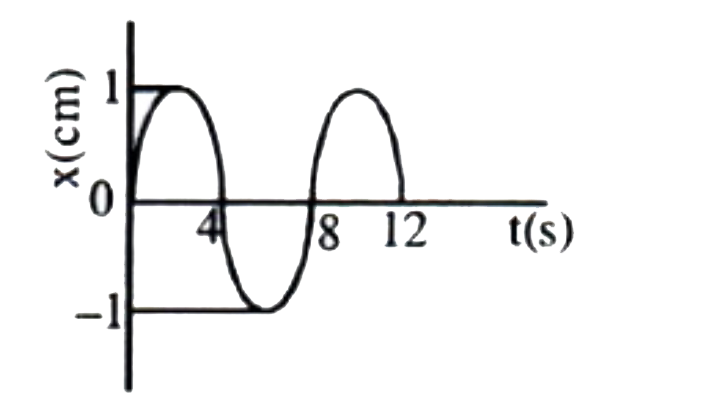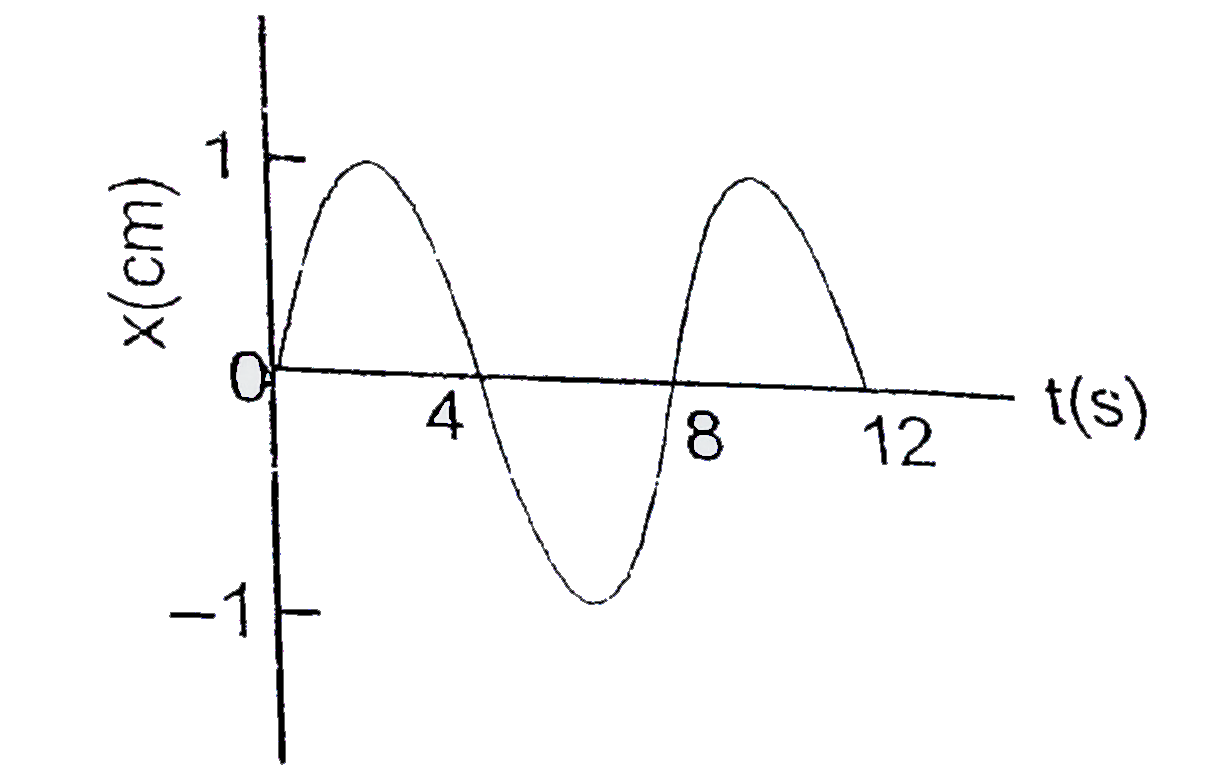A particle performing simple harmonic motion having time period 3 s is in phase with another particle which also undergoes simple harmonic motion at t=0. The time period of second particle is T (less that 3s). If they are again in the same phase for the third time after 45 s, then the value of T will be
2.8 s
2.7 s
2.5 s
none of these
The correct Answer is:C
To solve the problem, we need to find the time period T of the second particle, given that it is less than 3 seconds and that both particles are in the same phase for the third time after 45 seconds.
1. Identify the Time Periods:
- Let the time period of the first particle be T1=3 seconds.
- Let the time period of the second particle be T2=T seconds (where T<3).
2. Understanding Phase Condition:
- Both particles start in phase at t=0.
- The condition for the two particles to be in phase again is given by:
ϕ2−ϕ1=n⋅2π
where n is an integer.
3. Expressing Phase in Terms of Angular Frequency:
- The angular frequency ω is related to the time period by:
ω=2πT
- For the first particle:
ϕ1=ω1t=2πT1t=2π3t
- For the second particle:
ϕ2=ω2t=2πT2t=2πTt
4. Setting Up the Equation:
- At the third occurrence of being in phase, we have n=3:
ϕ2−ϕ1=3⋅2π
- Substituting the expressions for ϕ1 and ϕ2:
2πTt−2π3t=6π
5. Simplifying the Equation:
- Factor out 2πt:
2πt(1T−13)=6π
- Dividing both sides by 2π:
t(1T−13)=3
6. Substituting t=45 seconds:
- Substitute t=45:
45(1T−13)=3
- Rearranging gives:
1T−13=345=115
7. Solving for T:
- Rearranging the equation:
1T=115+13
- Finding a common denominator (15):
1T=115+515=615=25
- Taking the reciprocal:
T=52=2.5 seconds
Final Answer:
The time period T of the second particle is 2.5 seconds.
---
- Let the time period of the first particle be T1=3 seconds.
- Let the time period of the second particle be T2=T seconds (where T<3).
- Both particles start in phase at t=0.
- The condition for the two particles to be in phase again is given by:
ϕ2−ϕ1=n⋅2π
where n is an integer.
- The angular frequency ω is related to the time period by:
ω=2πT
- For the first particle:
ϕ1=ω1t=2πT1t=2π3t
- For the second particle:
ϕ2=ω2t=2πT2t=2πTt
- At the third occurrence of being in phase, we have n=3:
ϕ2−ϕ1=3⋅2π
- Substituting the expressions for ϕ1 and ϕ2:
2πTt−2π3t=6π
- Factor out 2πt:
2πt(1T−13)=6π
- Dividing both sides by 2π:
t(1T−13)=3
- Substitute t=45:
45(1T−13)=3
- Rearranging gives:
1T−13=345=115
- Rearranging the equation:
1T=115+13
- Finding a common denominator (15):
1T=115+515=615=25
- Taking the reciprocal:
T=52=2.5 seconds
The time period T of the second particle is 2.5 seconds.
Topper's Solved these Questions
- BOOK - CENGAGE PHYSICS ENGLISHCHAPTER - LINEAR AND ANGULAR SIMPLE HARMONIC MOTIONEXERCISE - Multiple Correct35videos
LINEAR AND ANGULAR SIMPLE HARMONIC MOTION
- BOOK - CENGAGE PHYSICS ENGLISHCHAPTER - LINEAR AND ANGULAR SIMPLE HARMONIC MOTIONEXERCISE - Assertion Reasoning6videos
LINEAR AND ANGULAR SIMPLE HARMONIC MOTION
- BOOK - CENGAGE PHYSICS ENGLISHCHAPTER - LINEAR AND ANGULAR SIMPLE HARMONIC MOTIONEXERCISE - Subjective21videos
LINEAR AND ANGULAR SIMPLE HARMONIC MOTION
- BOOK - CENGAGE PHYSICS ENGLISHCHAPTER - KINETIC THEORY OF GASES AND FIRST LAW OF THERMODYNAMICSEXERCISE - Interger11videos
KINETIC THEORY OF GASES AND FIRST LAW OF THERMODYNAMICS
- BOOK - CENGAGE PHYSICS ENGLISHCHAPTER - MISCELLANEOUS KINEMATICSEXERCISE - Interger type3videos
MISCELLANEOUS KINEMATICS
Similar Questions
Knowledge Check
- Question 1 - Select One
A particle executing simple harmonic motion with time period T. the time period with which its kinetic energy oscillates is
ATB2TC4TDT2 - Question 2 - Select One
A particle executing simple harmonic motion with an amplitude A. The distance travelled by the particle in one time period is
AzeroBAC2AD4A
The displacement of a particle in simple harmonic motion in one time period is
View SolutionThe x-t graph of a particle undergoing simple harmonic motion is shown below. The acceleration of the particle at t=23s is
 View Solution
View SolutionThe x−t graph of a particle undergoing simple harmonic motion is shown below. The accelertion of the particle at t=4/3s is
 View Solution
View SolutionA particle executes a simple harmonic motion of time period T. Find the time taken by the particle to go directly from its mean position to half the amplitude.
View SolutionA particle is executing simple harmonic motion with an amplitude A and time period T. The displacement of the particles after 2T period from its initial position is
View SolutionThe distance moved by a particle in simple harmonic motion in one time period is
View Solution

